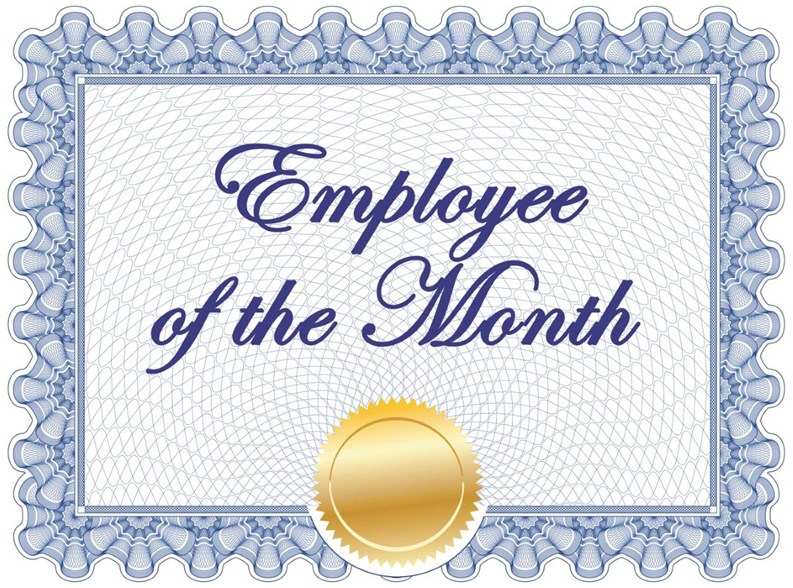It’s an unfortunate truth that even the most harmonious condo community or HOA will experience occasional friction between staff members, or between staff and management. Sometimes it’s a personality conflict, or a case of an employee behaving improperly or not fulfilling the duties expected of him or her. Regardless of the origin, staff-related problems can be a burden on any association. Fortunately, there are methods for dealing with these problems that can yield positive outcomes for everyone involved.
Top Problems
According to Matt Nerzig, communications director for the Service Employees International Union (SEIU-32BJ), the largest building service workers union in the country, the most common staff issues brought to the union’s attention generally revolve around open position cases, schedule changes, days-off and disciplinary actions.
According to Robert Francis, president of Planned Companies, a building services management and security firm based in Parsippany, habitual lateness is a major sticking point between associates, as are things like “poor communication—when things that occurred during a prior shift aren’t relayed completely or clearly.” Francis also says that disagreements over duties and job descriptions can cause acrimony as well.
Respect the Employee and the Process
“Our company has [over] 1,250 associates and growing,” says Francis, “so there will be issues. We are all human, we are not perfect, and mistakes can and will occur. It is how you handle them that can separate you as a company and as an individual from the pack.”
Often, how you handle a situation may involve a creative approach, says Peter Grech, former president of the New York Superintendents Technical Association (NYSTA) and a building manager for over 25 years. At a previous job where Grech was a resident manager, he was having difficulty with a 40-year-old porter who enjoyed the nightlife — to the point that he was perpetually late to work. Grech says he tried everything he could think of to encourage the guy to get it together and save his job, to no avail. Frustrated, Grech had one more trick up his sleeve—he called the employee’s mother.
“I told his mom, ‘I’m about to fire your son because he’s late too many times,’” says Grech. “That straightened him up!” The bold move did more than just resolve the habitual lateness; eventually the employee was promoted to head porter.
If a staff member like Grech’s wayward porter needs to be reprimanded or gotten back on-track after an infraction or disagreement, it’s important that it be handled properly, with respect for both the associate and the disciplinary process itself. Grech followed the protocol for his building, which included talking to the employee and giving him another opportunity to fix his behavior, followed by a written warning when the behavior didn’t change. However, Grech saw potential in this employee and didn’t want to fire him, so he tried the mother trick.
“There’s lots of psychology in this job,” he says. “Every time I fire someone, I feel like it’s a failure on my part that I wasn’t able to turn that person around. The only situation I can’t salvage is when someone steals.”
Communication/Orientation
Grech also stresses the importance of clear, explicit job descriptions for each position to avoid confusion among staff and supervisors.
Nerzig agrees that communication with staff members is also key to creating a positive work force. “If the staff member does not correct their performance after a warning notice and opportunity to correct, their manager should contact 32BJ and ask a union representative to review the matter with the staff member and advise them of the potential for serious disciplinary action.”
Whether spelled out individually or as part of an integrated orientation program for staff members, management experts generally agree that clear job descriptions and open-door policies between staff and management are hugely helpful in averting major problems among building and HOA associates.
“We conduct an orientation with all our new and existing associates where we discuss the importance of having a genuine culture that recognizes and rewards open communication, teamwork, integrity and attention to detail/continuous improvement,” says Francis. “We also have a school of professional education where our associates have access to online courses on business communications, effective report writing, customer service, computer coursework and more.”
Different Problems and Solutions
When decisions are handed down in courts of law, the judgment fits the crime, so to speak. Someone who runs a red light or gets cited for disorderly conduct might be fined or ordered to perform community service, whereas someone who steals a car or commits an act of violence is subject to much stiffer penalties. Comparing building staff members to court defendants might seem a bit much, but the general concept holds true for both groups; different problems call for different solutions.
For example, consider Jim, a hypothetical member of your HOA’s janitorial staff. Say he never really cleans out the trash bins very well. He makes an attempt, but they still smell, and residents are complaining. Grech says that sometimes such problems are just the result of poor or incomplete training, and correcting it is simply a matter of showing Jim the way you want it done.
Other problems are handled through an individual worker’s union. For example, say that two HOA staff members who work on the same daytime shift simply do not get along. They are constantly arguing, sometimes loudly, and residents are starting to complain. Routine problems such as this one are usually handled within the context of the union, say the pros. A union representative sits down with the involved parties and brokers a solution. Sometimes a problem between staff members can be resolved by simply moving one employee to another shift.
But for another fictional staffer—call her Mary—who is repeatedly late to work, especially on Monday mornings, discipline must be handled much differently. Perpetual lateness isn’t a problem to be taken lightly. It’s a common employee problem in the United States, which has been reported to cost U.S. businesses more than $3 billion each year, so it’s important to nip it in the bud.
“A lateness problem can be handled by a manager by warning the staff member and asking a 32BJ representative to discuss the situation with the member,” says Nerzig. “The union rep can explain to the tardy member that their conduct negatively impacts their work colleagues and disrupts the workplace and therefore must cease. If the problem persists, it can result in further discipline and/or discharge.” Nerzig adds that before anything that dire is on the table, managers should contact the union and enlist their help to work the problem out amicably.
Drugs and Alcohol
Say that Nicole has been working for your HOA for a few years, but over the last six months or so, you’ve noticed a marked change in her work habits and her appearance. You suspect drugs, alcohol or both. Needless to say, an employee who uses drugs or alcohol while on the job represents not just danger to themselves, but a liability to the entire association—particularly if the employee is using equipment, driving, or accessing residents’ apartments.
According to the Department of Labor’s Office of the Assistant Secretary for policy (OASP) and the Occupational Safety and Health Administration (OSHA), signs of possible substance abuse in the workplace can include physical signs such as the smell of alcohol, disheveled appearance, and weight loss, as well as behavioral red flags such as “missed appointments, excessive absences and repeated mistakes.”
Alcohol and drug abuse are problems that need to be dealt with immediately and through the proper channels—this isn’t one to try and tackle internally, say the experts. “A staff member with a substance abuse problem is an entirely different matter and should be referred to a union representative and strongly encouraged to utilize the various programs available through the 32BJ Health Fund,” says Nerzig.
Correction vs. Discipline
Building or association staff members are qualified, experienced adults—otherwise, they wouldn’t have been hired — and it’s vital that they be treated as such. Using loaded words like “discipline,” or “punishment” can send the wrong message and have the opposite of the intended effect. For his part, Grech says he prefers to approach staff problems with what he calls “progressive corrective action,” rather than “disciplinary action.”
While you’re waiting for an employee to correct a negative behavior, management experts advise supervisors and managers to expect good overall behavior. The negative behavior must stop immediately of course, but the employee should be give positive reinforcement, while at the same time working collaboratively with supervisors to get to the underlying cause of the problem.
It’s also important to make choices with a clear head, and not let a moment of temper dictate how a situation is handled. “Never fire or suspend someone on the same day,” says Grech. “Depending on how strongly you feel, sleep on the action and see if you still feel the same way tomorrow.”
The only time the pros interviewed for this article say they will immediately terminate an employee is in cases of outright theft. “That goes straight to termination,” says Grech. For issues falling short of theft however, your employee deserves several opportunities to correct the problem and get their job back on track. By following your association’s own rules for corrective action, everybody gets a fair shake, and the chance to turn things around — and maybe even exceed expectations.
“We understand that mistakes can happen,” says Francis. “And as long as you’re consistent, open, and willing to admit to your mistakes, you can grow from them.”
Lisa Iannucci is a freelance writer and published author living in Poughkeepsie, New York. Additional reporting by Melissa Swinea and Hannah Fons.







Comments
Leave a Comment